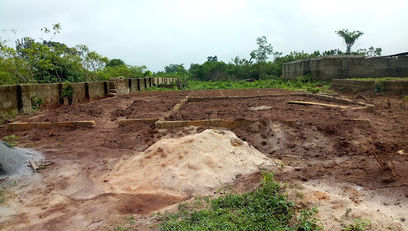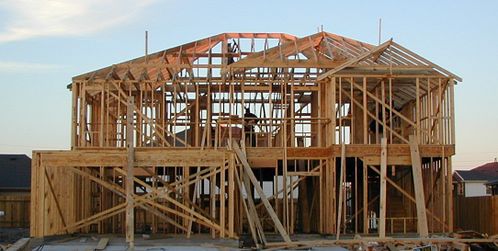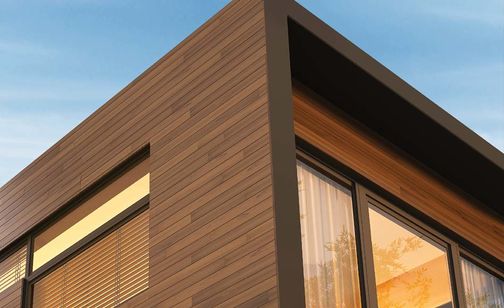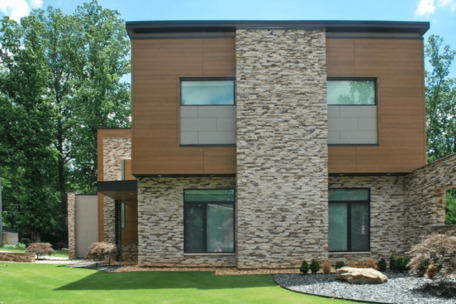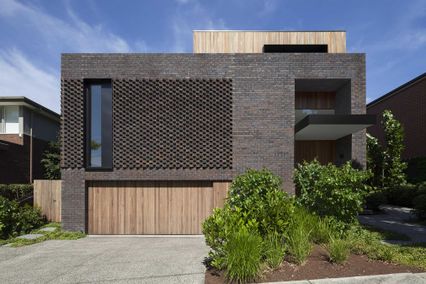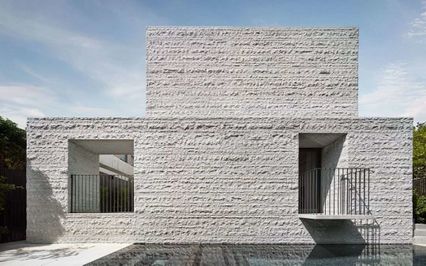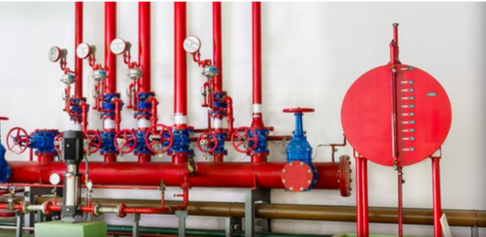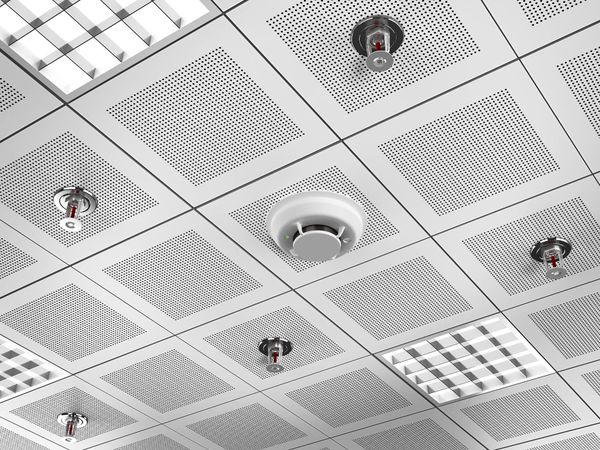Abstract: This thesis studied the definition of a green building and the elements associated with the construction of sustainability. There are many rating systems available across the country both private and public. The most well-known is the LEED rating system developed by the United States Green Building Council. LEED has several rating programs now available.
In this thesis, I will discuss why Green Building is more significant than conventional building and methods of Green Building like construction Phases. Conventional buildings produce high amounts of greenhouse gas, a large quantity of construction and demolition debris (which decrease landfill capacity), disturb natural resources, and consume much energy and water. Implementation of various simple and sustainable techniques practiced individually can help in many ways to create an environmentally friendly structure, consume minimal natural resources and at the same time be economical. This paper tries to study the Green Building construction method and innovative technologies that enable us to create a sustainable structure. It also includes design concepts of Green Building, methodology and materials requirements, and ideas and suggestions to create a checklist for a builder to refer to the various suggestions in every phase of construction of a general structure.
Key Words: Green Building, Construction of Sustainability, LEED, Minimal Natural Resources, and Sustainable Structure.
1. Introduction
1.1 Construction Project Management & How it Hurts the Environment.
Planning, directing, and controlling a construction project from start to finish is called construction management or sometimes construction project management. All this is the idea stage of the traditional framework. However, this harmed the ecosystem. In addition to the construction method and the materials used, other factors also affect the environment. Its functional design is also an important factor.
The recent expansion of the construction industry is having a detrimental effect on the environment. The UK Green Building Council estimates that over 400 million tons of materials are used in the construction industry each year, many of which are harmful to the environment. Based on further research, building materials can affect the environment due to the "extraction of raw materials". However, the Environmental Protection Agency (EPA) claims that several tools and materials commonly used by US construction companies and contractors can seriously "harm public health and the environment". These materials and tools include chemicals used in the workplace in addition to diesel fuel for cars and excavators.
In addition, the EPA reports that the US construction industry generates 160 million tons of waste annually, or 25% of the nation's non-industrial waste generation. Several methods used in house construction can damage the environment either temporarily or permanently. Some of these methods are mentioned below:
- Resource Depletion
Construction requires various natural resources such as wood, minerals, and water. Unsustainable mining practices can lead to ecosystem depletion, habitat degradation, and soil erosion.
- Energy Consumption
The extraction, transportation, and on-site work of building materials require a lot of energy, and these energy sources are usually non-renewable. Excessive energy use increases greenhouse gas emissions, which worsens climate change.
- Greenhouse Gas Emissions
Carbon dioxide is one of the most important greenhouse gases produced during the energy-intensive production process of building materials. It is accurate for steel and cement. As supplies and equipment are transported to construction sites, emissions also increase.
- Waste Generation
During building operations, large amounts of waste are produced, including additional materials, packaging, and demolition debris. It is essential to dispose of construction debris correctly to prevent habitat destruction, soil and water contamination, and landfill overflow.
- Water Pollution
Waterways may be harmed by construction-related operations due to improper disposal of trash, silt runoff, and chemical spills. Sedimentation has the potential to damage water quality, destroy aquatic habitats, and upset aquatic ecosystems, all of which can hurt the environment and human health.
- Air Pollution
Due to vehicle activity, material processing, and mechanical operation, construction sites produce dust, particulate matter, and pollutants that are in the air. Poor air quality can lead to respiratory issues and other negative health effects, as well as be detrimental to the health of neighboring residents and workers.
1.2 How Construction Can Protect the Environment
By adopting ecologically friendly building materials, the strategy can minimize annual CO2 emissions by 250 metric tons, according to environmental group LEED. Furthermore, it is anticipated that 60% of construction projects will be green by 2018, and 70% of survey participants said that the "greatest benefit" of building green was lower running costs. These numbers corroborate the hypothesis that the number of green buildings is doubling every three years. The survey was conducted by Dodge Data & Analytics. According to the report, construction companies are under more pressure than ever to design sustainable and energy-efficient structures. Numerous studies have been conducted in this field because the EPA decided to focus on green construction programs. Together with the National Institute of Building Sciences, the two institutions created a green building construction guide. It provides guidelines for how construction companies can adhere to federal legislation while implementing green building ideas into their operations. They have also prompted several initiatives, some of which are listed here, to lessen the effects of buildings on the environment.
- Energy Star Program
- Industrial Recycling Program
1.2.1Green Building
Buildings use 68% of the country's power, 12% of its water, 39% of its energy, and 38% of its carbon dioxide emissions. These numbers originate from US EPA data. Moreover, the typical American spends up to 90% of their time indoors, indicating a significant impact of the built environment on people's emotional state, level of productivity, and overall health.
High-performance buildings are examples of efficient resource consumption in their design, construction, refurbishment, and operation. Reducing the overall impact on public health and the environment is the main goal of the "green building" methodology.
For these reasons, high-performance buildings are sometimes called sustainable or green buildings.
- Making better use of water, electricity, and other resources.
- Cutting down on pollution, waste, and environmental harm
- Improving worker output while preserving occupant well-being.
The current study compares the planning, building, and commissioning phases of conventional versus environmentally friendly building projects. In addition to covering the benefits of sustainable construction, the study will be based on a comprehensive examination of the literature. Finally, some practical ideas for improving the project management system now in place for green buildings will be presented.
2. Investigative Procedure
2.1 Site Condition
The following points should be considered concerning site selection:
2.1.1 Field Test
2.1.2 Protection of Native Soil
To preserve natural ecosystems, encourage sustainable land use practices, and maintain ecosystem integrity, native soil must be protected during the construction of green buildings. Here are a few tactics to guarantee that native soil is protected:
- Site Assessment and Planning
- Erosion and Sediment Control
- Minimization of Soil Compaction
- Vegetation Preservation
- Soil Management Practices
- Water Conservation Measures
- Soil Testing and Analysis
- Environmental Monitoring and Compliance
- Education and Training
- Collaboration with Stakeholders
2.1.3 Ground Water Test
Groundwater testing is a crucial component of developing green structures since it ensures that the project will not adversely influence nearby water supplies and that it will comply with environmental regulations.
2.1.3 Geo-Technical Report
A geotechnical report for green building construction should contain comprehensive information about the site's soil and geological characteristics to aid in the design, construction, and long-term performance of the project in an environmentally friendly manner.
Provide a general description of the site's topography, geology, and hydrology, highlighting any relevant geological characteristics, groundwater availability, soil types, and seismic risks.
Find out whether there are any environmental constraints or sensitivities that could affect site development or construction. Describe the methods used to collect geotechnical data during field investigations, including soil sampling, test pit excavations, borehole drilling, and in-situ testing. Keep track of the locations, depths, and procedures for each field study project.
Include recommendations for foundation design, soil classification, bearing capacity, slope stability, and settlement analysis together with the geotechnical study's results and interpretation. Ascertain whether the site is appropriate for a building and make a note of any geotechnical hazards or limitations that could require attention.
2.2 Foundation and Walls
When building walls and foundations for green buildings, environmentally friendly building practices, energy-efficient design concepts, and sustainable building materials are integrated into the structure. Consider the following while constructing environmentally friendly foundations and walls:
2.2.1 Energy Efficiency
Use high-performance thermal design for foundations and walls to reduce the amount of energy required for heating and cooling. Use double-wall construction, structural insulated panels (SIPs), or insulated concrete forms (ICFs) to lower thermal bridging and boost energy efficiency.
2.2.2 Material Selection
Choose sustainable, eco-friendly building materials such as fly ash, salvaged wood, recycled concrete, and locally mined stone. To lessen the building's carbon impact, consider employing sustainable materials for the walls, such as rammed earth, bamboo, or straw bales.
2.3 Structural Plan
Choosing the appropriate structural materials is crucial for designing green buildings to achieve sustainability, energy efficiency, and environmental responsibility. The following are a few instances of structural material types that are frequently utilized in the development of green buildings:
2.3.1 Engineered Wood Products (EWPs):
Traditional building materials can be replaced with sustainable alternatives like cross-laminated timber (CLT). It is made of several layers of timber planks fastened together at right angles. When containing carbon dioxide, it has remarkable strength, dimensional stability, and fire resistance.
Glulam, also known as glued laminated timber, is a type of massive structural element created by gluing individual planks of lumber together. They provide design freedom for a range of applications and are robust and lightweight.
2.3.2 Recycled Steel:
Structural steel made from recycled materials is a sustainable choice for green building construction. Recycled steel retains its strength and durability, reduces the demand for virgin materials, and can be recycled again at the end of its life cycle.
2.4 Exterior Finish
Choosing the best material for the exterior finish of a green building depends on various factors such as sustainability, energy efficiency, durability, and aesthetics. Here are some materials commonly used for green building exteriors:
2.4.1 Use of Wood
Reclaimed or certified timber are two examples of sustainably sourced wood that might be a great option. Its carbon impact is smaller than that of certain other materials, and it is renewable and biodegradable. Nonetheless, upkeep can be necessary to stop rotting or decomposition.
2.4.2 Fiber Cement
Fiber cement siding is a low-maintenance, long-lasting material composed of cellulose fibers, sand, and cement. In addition, it comes in a range of styles, some of which even emulate the appearance of wood.
2.4.3 Brick
Bricks last a long time, require little maintenance, and are durable. They offer superior thermal mass, which can save energy costs for heating and cooling and assist control interior temperature.
2.5 Stone
Natural stone siding is long-lasting and has a classic look. It requires little upkeep and can tolerate inclement weather. Using stone that is obtained locally can also cut down on emissions from transportation.
2. 6 Metal
Aluminum or steel metal siding is low maintenance, long-lasting, and recyclable. It is both pest- and fire-resistant. To save money on cooling, metal siding can also be coated or pre-painted to reflect heat.
2.7 Plumbing
Water efficiency, longevity, and environmental sustainability should be given top priority when selecting plumbing materials for green buildings. The following supplies are frequently utilized for plumbing in green buildings.
2.7.1 High-Efficiency Fixtures
Water consumption can be greatly decreased by installing water-efficient devices like low-flow showerheads, faucets, and toilets. Seek out fixtures that have earned certification from Water Sense or similar regional requirements.
2.7.2 PEX (Cross-linked Polyethylene)
Because PEX piping is flexible, strong, and resistant to freezing and corrosion, it is becoming more and more common in green building projects. In addition to being recyclable, it requires less energy to create than metal piping.
2.7.3 CPVC (Chlorinated Polyvinyl Chloride)
Thermoplastic CPVC pipe is renowned for its affordability, resilience to rust, and longevity. In homes and businesses, it's frequently utilized for hot and cold-water distribution systems.
2.7.4 Rainwater Harvesting Systems:
To collect and store rainwater for non-potable needs like irrigation, toilet flushing, or cooling systems, rainwater harvesting systems can be incorporated into plumbing designs in green building projects. Pumps, filters, and storage tanks are frequently used in these systems.
2.8 Ventilation and Natural Heating and Cooling
For a green building, incorporating effective ventilation and natural heating and cooling systems is crucial to maximizing energy efficiency, indoor air quality, and occupant comfort. Here are some strategies commonly used in green buildings:
2.8.1 Natural Ventilation:
Design the building to take advantage of natural airflow patterns to provide ventilation and cooling. This can include strategically placed windows, operable skylights, and building orientation to capture prevailing winds.
2.8.2 Passive Solar Design:
Orient the building to optimize solar exposure and incorporate features such as large windows, thermal mass, and shading devices to maximize solar heat gain in winter and minimize it in summer.
2.9 Lighting
Lighting plays a significant role in green building design by enhancing energy efficiency, occupant comfort, and overall sustainability. Here's how lighting should be planned and implemented for a green building:
2.9.1 Natural Daylighting:
Maximize the use of natural daylight by incorporating large windows, skylights, and light wells into the building design.
Orient building spaces optimize daylight penetration and minimize glare and solar heat gain.
Use daylight sensors and automated shading systems to regulate daylight levels and reduce the need for artificial lighting.
2.9.2 Energy-Efficient Lighting Fixtures:
Choose energy-efficient lighting fixtures, such as LED (light-emitting diode) and CFL (compact fluorescent lamp) luminaires, to minimize energy consumption and operating costs.
Select fixtures with high efficacy ratings and long lifespans to reduce maintenance requirements and lifecycle costs.
Use lighting controls, such as occupancy sensors, dimmers, and timers, to adjust light levels based on occupancy, daylight availability, and time of day.
2.10 Fire System
Fire protection within a structure is a system that relies on all its components. I have designed fire systems as per USA fire standards.
2.10.1 Sprinkler System
Providing sufficient pressure and flow rate to a water distribution piping system, to which fire sprinklers are attached, is the foundation of an active fire prevention system, known as a fire sprinkler system.
2.11 Green Element
An in-depth examination of the aspects that contribute to a building's greenness is done in this section's discussion of its constituent parts. The categories established by LEED for Homes will be utilized in this thesis to establish consistency. The reason for this was that LEED for Homes is all-inclusive and addresses every facet of green building. This thesis uses the categories to approach and examine the components of a green building, without endorsing LEED for Homes above any other description or rating system.
2.11.1 Innovation & Design Process
Special design techniques, distinct regional credits, measurements not currently covered by the rating system, and exceptional performance levels are the main goals of LEED for Homes. Three methods are provided by the LEED for Homes to receive points for creativity and design. Promoting an integrated, system-oriented approach to the design and implementation of green projects is one way to achieve this. To maximize the development of the green project, project teams are advised. The following are some suggested tasks for the project team:
- Conceptual or schematic design.
- LEED planning.
- Preliminary design.
- Energy and envelope systems analysis or design.
- Design development.
- The final design, working drawings or specifications; and
- Construction.
2.11.2 Location & Linkages
Placing homes with the greater community in a socially and environmentally responsible manner is the fundamental goal of LEED for Homes. In this LEED category for homes, points can be obtained in the following six areas:
- Development of the neighborhood by adherence to the LEED for Neighborhood Development program.
- Steer clear of developing environmentally sensitive areas. For instance, you shouldn't construct anything at or below a 100-year flood plain, within 100 feet of a waterway, on any property where there are listed endangered or threatened species by the federal or state governments, or on land that has "prime soils," "unique soils," or "soils of state significance."
- Promote the development of residential areas close to or inside already-existing communities; for instance, build on an existing lot.
- Build homes in developments that are served by or are near existing infrastructure. The home must be within at least ½ mile of existing services.
- Build homes that allow for walking, biking, or public transportation, thereby minimizing the use of automobiles and their associated environmental impacts.
- Select a site that is within ½ mile of a publicly accessible or community-based space at least ¾ acre in size.
2.11.3 Sustainable Sites
The basic intent of LEED for Homes is to use the entire property to minimize the project’s impact on the site. There are six-point earning segments within LEED for Homes:
- Site Stewardship – minimize long-term environmental damage to the building lot during the construction process. Accomplish this by pre-planning for the construction to: minimize areas disturbed on the site, erosion protection, and preserve existing plantings.
- Design landscaping features to avoid invasive species and minimize the demand for water and the need for synthetic chemicals, limiting the use of conventional turf and drought-resistant plants.
- Design landscaping to reduce the local heat island effect. Accomplish this by placing plantings to provide shading and installing light-colored materials over at least 50% of the sidewalks, patios, and driveways within 50 feet of the house.
2.11.4 Water Efficiency
The basic intent of LEED for Homes is to provide water-efficient practices, both indoor and outdoor. There are three elements within this category where points can be earned:
- Use of municipal recycled water or offset central water supply through the capture and controlled reuse of rainwater and /or greywater. Rainwater storage systems must hold all the water from a one-inch rainfall event and/or use a greywater system collecting water from clothes washers, showers, and some faucets.
2.11.5 Energy & Atmosphere
The basic intent of LEED for Homes is to provide energy efficiency, particularly in the building envelope and heating and cooling design. There are eleven items for possible credit under the LEED for Homes:
- Meet or exceed the performance for an ENERGY STAR label.
- Design and install insulation to minimize heat transfer and thermal bridging. Must meet or exceed by 5% the requirements as listed in Chapter 4 of the 2004 International Energy Conservation Code.
- Minimize energy consumption caused by uncontrolled air leakage into and out of air-conditioned spaces.
- Maximize the energy performance of windows. Windows and doors must meet or exceed the requirements of ENERGY STAR performance.
- Energy consumption due to thermal bridges and/or leaks in the heating and cooling distribution system must be minimized. For example, use at least an R-6 insulation around ducts, and limit air leakage to the outside envelope by measured flow rates defined in the LEED Home standard.
2.11.6 Material & Resources
The basic intent of LEED for Homes is efficient utilization of materials, selection of environmentally preferable materials, and minimization of waste during construction. LEED for Homes has three areas in which points can be earned:
- Optimize the use of framing materials by limiting the overall waste factor to 10% or less. LEED defines waste factor as the percentage of framing material ordered more than the estimated material needed for construction. Credits are given for detailed planning for lumber requirements for the frame.
- Use products that are extracted, processed, and manufactured within the region. Provide all wood products that meet specified LEED environmentally preferred product requirements as defined in the LEED manual. To receive credit, the materials must make up 90% of the component (i.e. environmentally preferable, low emissions, and local sourcing) by weight or volume. This applies to either a combination of components or single components. Use products that meet specifications as defined by LEED for low emissions, and/or are of local production and were extracted, processed, and manufactured within 500 miles of the home.
2.11.7 Indoor Environmental Quality
The basic intent of LEED for Homes is the improvement of indoor air quality by reducing the creation of and exposure to pollutants. There are ten areas where points can be earned in the LEED for Homes rating system:
- Install an ENERGY STAR-approved bundle of air quality measures. This can be accomplished by completing all the requirements of the U.S. Environmental Protection Agency’s ENERGY STAR with Indoor Air Package.
- Minimize leakage of combustible gases into the occupied space of the home. Minimum measures are defined in the manual such as no unvented combustion appliances, and a carbon monoxide detector must be installed on each floor.
- Control indoor moisture levels to provide comfort, reduce the risk of mold, and increase the durability of the home. Install dehumidification equipment to maintain humidity at or below 60%.
- Reduce occupant exposure to indoor pollutants by venting with outside air. Install whole-building ventilation systems that meet the requirements as established in ASHRAE.
- Reduce moisture and exposure to indoor pollutants in kitchens and bathrooms by meeting specific design requirements such as installing exhaust systems with automatic sensors.
- Provide appropriate distribution of space heating and cooling in the home to improve thermal comfort and energy performance.
- Reduce particulate matter from the air supply system by installing air filters.
2.11.8 Awareness & Education
The basic intent of awareness and education is to provide education for homeowners, tenants, and/or building occupants. The basic requirement of this category is to maintain the performance of the home by educating the occupants about the operations and maintenance of the home’s features and equipment. There are no requirements under LEED for New Construction about awareness and education.
3. Investigative Result
The integration of all these measures and suggestions can be used to create a checklist that can enable a builder or an organization to follow all possible implementations during each phase of the construction of a structure. The checklist allows a builder to identify the necessary steps to be implemented periodically as each phase of construction progresses and apply the suggestions as the work moves ahead.
These kinds of checklists have been created by various nonprofit organizations like LEED and Build Green in the United States where they certify a house to be a green building only after a builder incorporated all the features in a home. Each feature is assigned points and after accumulating a minimum number of points, the building can be credited.
- '1.' Site Preparation.
- 1. Protect Topsoil and Minimize Disruption of Existing Plants and Trees.
- Protect Topsoil and Reuse after Construction.
- Limit and Delineate Construction Footprint for Maximum Protection.
- 2. Use recycled content aggregated.
- 3. Diversity and recycling construction waste from the job site.
- 4. Cool site: Diminish the site's heat island effect.
- 5. Construction Environment Quality Management Plan, Duct Sealing.
- Duct Openings and other related air distribution component openings will be covered during construction.
- '2.' Foundation
- 1. Use slag or reclaimed fly ash in place of Portland cement when making concrete.
- 2. In cold climates, use a shallow base protected by frost.
- 3. Set up the drainage system for the foundation.
- 4. Crawlspace with Moisture Control.
- 5. Construct and Develop Structural Pest Management
- Install Termite Shields & Separate All Exterior Wood-to-Concrete Connections
- All Plants Have a Trunk, Base, or Stem Located At Least 36 Inches from the Foundation
- '3.' Landscape
- 1. Create Resource-Smart Landscapes.
- 2. Construct shade trees.
- 3. Put in place irrigation systems with high efficiency.
- 4. Reduce the amount of turf the builder installed in the landscape.
- 5. Cover the top 6 to 12 inches of soil with 2 inches of compost.
- 6. System for harvesting rainwater. Recycled wastewater is used in irrigation systems.
- 7. Seventy percent of the fencing and non-plant landscape features should be made of environmentally preferred materials.
- '4.' Structural Framework
- 1. Apply Optimal Value Engineering.
- 2. Construction Materials Efficiencies.
- 3. Use Engineering Lumber.
- 4. Use a Solid Wall System for floors, walls, and roofs.
- '5.' Exterior
- 1. Use Environmentally preferable decking.
- 2. Flashing Installation Techniques Specified and Third-party Verified.
- 3. Install a rain screen Wall system.
- 4. Use Durable and Non- combustible siding materials.
- 5. Use durable and fire-resistant roofing materials or assembly.
- '6.' Insulation.
- 1. Install Insulation with 75 percent recycled content on walls, ceilings, and floors.
- '7.' Plumbing
- 1. Distribute Domestic Hot Water Efficiency.
- Insulate all hot water pipes using engineering parallel plumbing.
- 2. Water Efficient Fixtures.
- High-efficiency showerheads, Bathroom, Kitchen, and utility faucets.
- '8.' Heating Ventilation and Air Conducting.
- 1. Properly design the HVAC System and Perform diagnostic testing.
- 2. Install sealed combustion units like furnaces and water heaters.
- 3. Install High-performing zoned hydronic radiant heating.
- 4. Install high-efficiency air conditioners with environmentally preferable refrigerants.
- 5. Design and install Effective ductwork.
- 6. Install a mechanical ventilation system for cooling.
- 7. Automatically controlled integrated system with variable speed control.
- '9.' Finishes
- 1. Design Entryways to reduce tracked contaminants.
- 2. Use recycled-content paint.
- 3. Use Environmentally preferable materials for interior finish.
- '10.' Flooring
- 1. Use Environmentally preferable flooring. (Minimum 15% Floor area)
- 2. Thermal Mass Floors. (minimum 50%)
4. Conclusion and Recommendations
The global shift towards zero-energy construction has made sustainability a crucial factor for building practitioners, legislators, and the industry at large. The influence of embodied energy and greenhouse gas emissions becomes significant when buildings achieve net zero energy use. Different materials and construction techniques can be used to build a zero-energy home, each of which will have a unique cumulative carbon footprint. Products made of wood may have extremely little or no carbon footprint. Thus, the best approach to maximize resource use and minimize the environmental impact of human activity is to employ wood, the most significant renewable resource, in every facet of human existence. Using wood goods often has a smaller overall environmental impact due to reduced emissions.
By implementing the proactive actions and suggestions outlined in the preceding pages, an individual or organization can develop a structure that incorporates all feasible measures to construct a sustainable building, which is why it is called a "green building."
With the help of this project, a user can collect and assimilate all the information needed to design a green building's structure, transform an existing building into a green building in most senses, and apply it appropriately.
All these steps add up to the ability to develop a green building that uses less energy and has a lower life cycle cost, improves the quality of life for its occupants, uses less water and natural resources, and produces less pollution for the environment. To raise awareness among the public and encourage an increasing number of people to contribute to the field of green building, contractors, builders, and consultants must understand the concept of green building.
5. References
[1] “How does Construction Impact the Environment.”
https://gocontractor.com/blog/how-does-construction-impact-the-environment/
[2] “Construction’s Impact on the Environment”
https://sourceable.net/constructions-impact-on-the-environment/
[3] “LEED rating system”
[4] “LEED Rating Level Requirements”
https://www1.nyc.gov/site/oec/green-building/green-building-basics.page
[5] “Corporate Social Responsibility for Sustainable Service-Dominant Logic”
http://www.diva-portal.org/smash/get/diva2:838487/FULLTEXT02
[6] “Sustainable Project Management for Green Construction: Challenges, Impact and Solutions”
https://www.irbnet.de/daten/iconda/CIB_DC25123.pdf
[7] “Integrated Study of Measures & Techniques in Green Building Construction”
[8] “Fire-Protection Design System”
https://www.buildings.com/article-details/articleid/3157/title/fire-protection-system-design
[9] “Sehgal Foundation, Green Building”
http://www.smsfoundation.org/green-building
[10] “Project Management Overview”
https://opentextbc.ca/projectmanagement/chapter/chapter-2-what-is-a-project-project-management/
[11] “Integrated Construction Process for Green Building”
Document information
Published on 24/04/24
Submitted on 16/04/24
Volume 6, 2024
Licence: CC BY-NC-SA license
